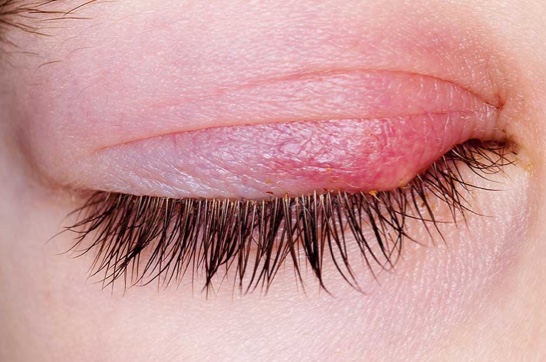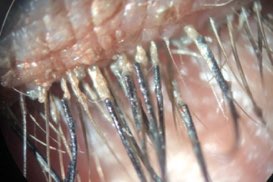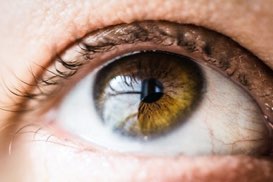By Jane E. Brody
From The New York Times
Putting carboxymethylcellulose sodium in one’s eyes two, three or more times a day may not sound like a great experience. But I can assure you that it can be. Drops of this chemical, called a topical lubricant, help to keep my eyes from burning, avoiding bright lights, becoming red and itchy, and generally feeling miserable.
Like tens of millions of Americans, especially women older than 50, I have dry eye disease, medically known as keratoconjunctivitis sicca. Fortunately, my problem is not severe, certainly not as bad as that of an elderly woman I know who has to use a nightly ointment of mineral oil and Vaseline, which minimizes the dryness but temporarily blurs her vision.
The drops I use, an over-the-counter preservative-free product called Refresh Plus (also sold as generic store brands) that I carry with me at all times, are a crucial measure I take to keep my eyes from becoming overly dry and chronically irritated — but not the only one.
To minimize the drying effect of wind when driving, cycling or sitting in a room cooled by a fan or air-conditioning, I wear wraparound glasses even when I don’t need them to see clearly. Watertight goggles are de rigueur when swimming, even in fresh water. And I refresh my eyes with drops when I watch a movie, work long hours at the computer, or do any activity that depresses the frequency of blinking, which moistens the eyes.
Dry eye is sometimes referred to as “a nuisance complaint — it’s not the sexiest of eye problems,” Dr. Rachel Bishop, chief consulting ophthalmologist at the National Eye Institute, told me. Nonetheless, she said, “Dry eye disease deserves serious professional — and personal — attention. It can be very debilitating and seriously diminish a person’s quality of life.”
Tears serve a variety of functions, which accounts for the kinds of complications their deficiency can cause. They lubricate the eye, supply it with nutrients and oxygen, and help to focus images and clear the eye of debris.
Untreated, severe dry eye disease can result in scarring, ulceration, infection and even perforation of the cornea, the clear outer layer of the eye that protects the iris, pupil and anterior chamber and accounts for much of the eye’s optical power.
But the current and evolving knowledge of the nature of tears and their production has led to a better understanding of the various causes of dry eye disease and major improvements in treating this all-too-common condition.
“We used to think that tears were like salty water — just add more liquid and you’ll be fine,” Dr. Bishop explained. “We now know that there are many hundreds of substances in tears, including 1,500 proteins, and three main components. We try to pinpoint why a particular person is experiencing dry eye and treat that person’s specific problem.”
Tears are now known to have layers: an outer fatty layer produced by the meibomian, or tarsal, glands at the rim of the eyelids; a middle watery layer from the lacrimal gland in the upper outer corner of each eye; and an inner protein-rich lubricating layer of mucin from the goblet cells of the conjunctiva that covers the whites of the eyes and lines the eyelids. A disruption of any one of these systems can result in dry eye.
The fatty layer keeps tears from evaporating too quickly and helps them cling to the surface of the eye. The watery layer continuously moistens the eye, nourishes the cornea and flushes away toxins and foreign bodies. And the mucin layer inhibits microbial growth and binds water.
Dry eye disease also turns out to have far more possible causes — and, as a result, various specific treatments — than was once thought. As the above description suggests, it is not just a matter of insufficient tears from the lacrimal glands.
Possible causes include defects in the parts of the eye that produce each of the layers in tears; an inflammatory disease like allergy or chronic blepharitis (an inflammation of the eyelids); environmental conditions like tobacco smoke or a dry climate; a hormonal imbalance (as occurs, for example, at menopause); the use of contact lenses; a vitamin deficiency; an underlying systemic disease like diabetes or rheumatoid arthritis; prolonged use of certain medications (diuretics, antihistamines, antidepressants and cholesterol-lowering drugs, among others); and damage to nerves in the eye, as can happen in LASIK eye surgery.
One of the more common chronic causes in older adults is Sjogren’s syndrome, an autoimmune condition that affects moisture-producing tissues throughout the body, including the lacrimal glands, Dr. Bishop said.
Among current possible treatments described by researchers at the Schepens Eye Research Institute and Massachusetts Eye and Ear Infirmary are topical applications of the immunosuppressant cyclosporin A; antibacterial and anti-inflammatory derivatives of the antibiotic tetracycline (like doxycycline); and high doses of essential fatty acids (the omega-3 fatty acids DHA and EPA in fish oil and flaxseed oil, used topically and orally) that inhibit inflammation and are now being tested in a major study funded by the National Eye Institute.
When conventional remedies fail, specialty eye drops can be made using the patient’s own blood serum diluted with saline.
Additional therapies are being tested. Results of an industry-sponsored study of a synthetic form of lacritin, a protein that stimulates tear production, are expected next year.
Meanwhile, there is much that dry eye sufferers can do for themselves. Dr. Reza Dana, professor of ophthalmology at Harvard Medical School, emphasizes that most cases “are not fully treated by one medication or one approach. You often need to do several things in combination.”
In an interview, he recommended sitting high up at a computer so that you are looking down at the screen, which reduces exposure of the eye surface; always wearing wraparound glasses outdoors; and adjusting the flow of air-conditioning in a car so that it doesn’t blow in your face.
In addition, he said, “A lot of evidence supports the benefits of vigorous exercise. It fosters blood flow, helps regenerate tissues and, by increasing heat, promotes the release of oils in the eyes.”
People taking tear-suppressing medications for a chronic illness might ask their doctors about trying an equally effective substitute that lacks this debilitating side effect. If blepharitis is a chronic problem, wet a washcloth with hot water and apply warm compresses to the eyes every morning. “This can be the cheapest and most effective remedy for some people,” Dr. Bishop said.








